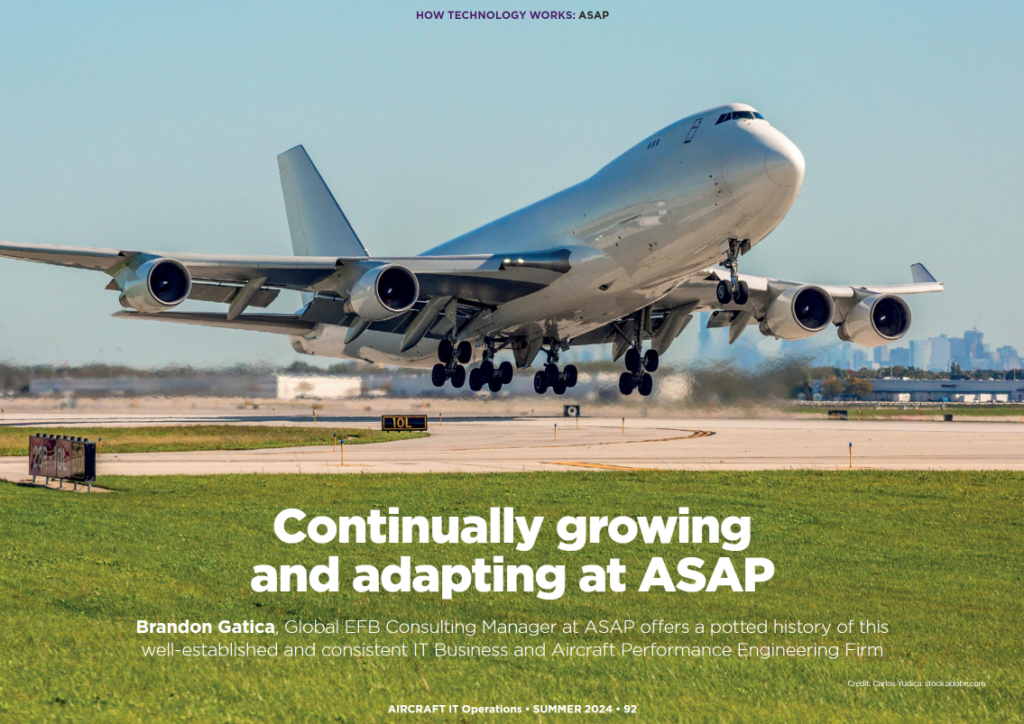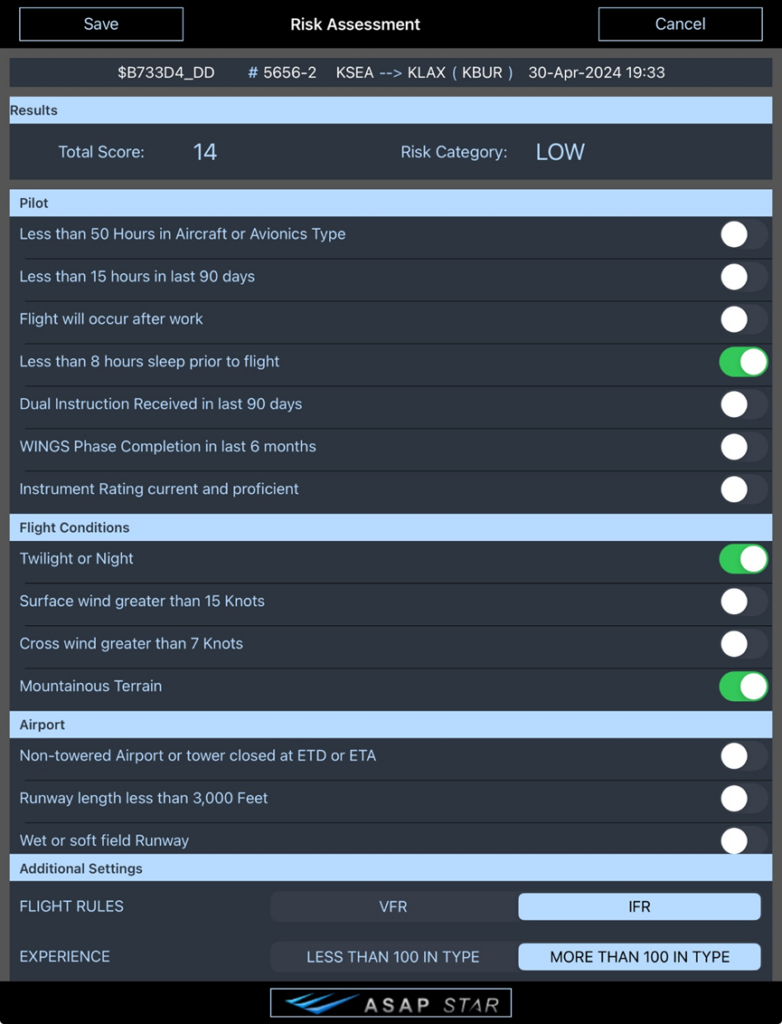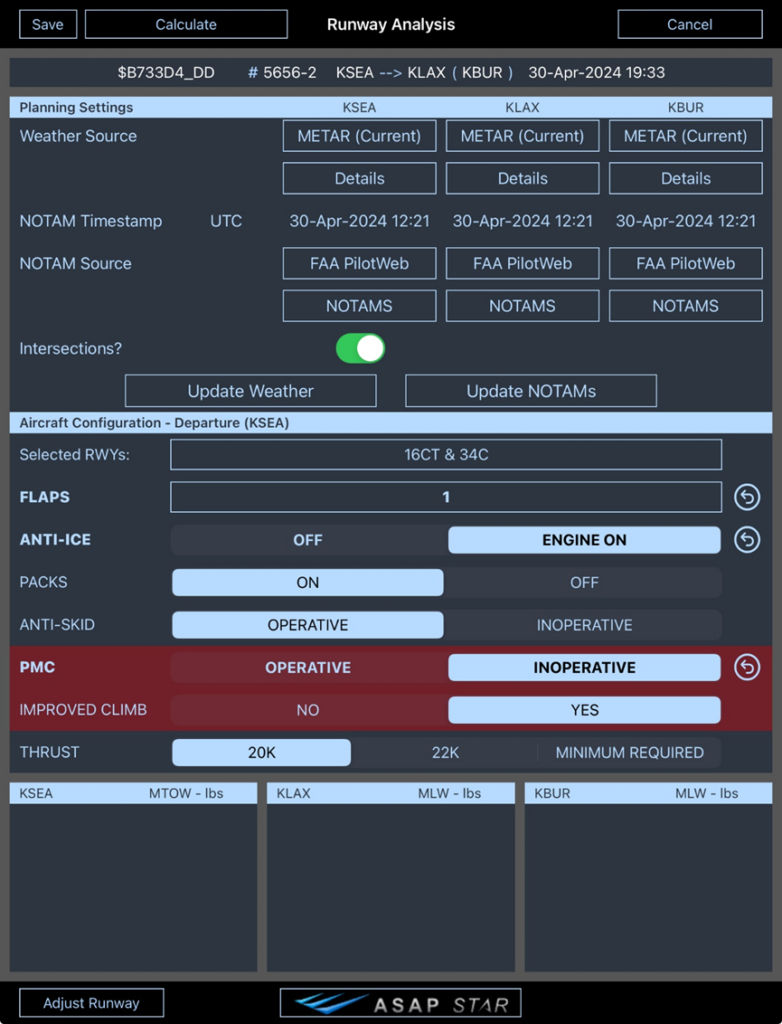Articles
| Name | Author |
|---|
WHITE PAPER: Continually growing and adapting at ASAP
Author: Brandon Gatica, Global EFB Consulting Manager at ASAP
Subscribe
Brandon Gatica, Global EFB Consulting Manager at ASAP offers a potted history of this well-established and consistent IT business
Founded in 1995, ASAP has provided efficient aircraft performance engineering services for nearly three decades. Staying at the forefront in such a competitive market as aviation IT has put plenty of demands on the business: the thorough, quality-driven response to those demands has epitomized why ASAP has successfully stayed the course and why customers put their faith in the products and services that the company offers. Currently, 20 regional airlines in the Middle Eastern, Caribbean, African, European, South American, and North American regions use ASAP. It is mostly popular in the North American Region, with very active markets in the United States and Canada.
So, with the thirty-year mark approaching and continuing success clear to see, we thought we’d ask Brandon Gatica, Global EFB Consulting Manager at ASAP, to update us on the company, its services, and its products today.
ASAP’S CORE MISSION AND USP
The secret of ASAP’s long-term success is that customers are at the heart of our approach; the aim is to deliver a premium service, to give customers the best products available in the class and the best service, especially when time is of the essence. With all that, we also believe that ASAP is different; for instance, other companies’ solutions provide Runway Analysis, Weight & Balance, and customer support services as ‘add-ons’ to their main business, but we are completely devoted to these services as our primary business. ASAP’s system is integrated throughout and dynamic to fit everyone’s needs.
WHAT ASAP DOES FOR REGIONAL AIRLINES
Regional airlines can greatly enhance their operations when using ASAP STAR because it supports and simplifies effective communication between the cockpit and other functions involved with the flight, such as the dispatch office, ground operations, gate agents, and baggage carriers, to name a few. Many useful features are embedded in ASAP STAR features such as reduced power take-offs, optimum flap settings, integration with flight planning vendors, flight risk assessment tools, and one-engine inoperative departure procedures. They all ensure cost savings and improved safety for regional airlines. (figure 1 below)

That cost saving extends to ASAP STAR preserving an aircraft’s engine life through reduced power take-offs. The system displays icons (such as revert marks) that notify users of changes, and various warning signs to help reduce errors. To further minimize the chance for human error, the system ensures that the settings that cannot be used simultaneously also change color to notify dispatchers, pilots, or any user of ASAP STAR that there is a problem before completing the performance calculations. (figure 2 below)

One Engine Inoperative turn procedures are available with ASAP STAR, and the system was the first in the industry to render and showcase these in various formats, such as YouTube, PDF, Google Earth, and text.
Doing so ensures that the pilot fully comprehends the procedure, thereby limiting human error that may arise from an unclear procedure. ASAP works efficiently to meet all our customer’s specific needs, creating aircraft- and client-specific requests to prolong engine life while fitting the exact needs of the airline.
The aircraft type for which ASAP STAR is most often used is the B1900D. We provide service to the largest B1900D fleet in the world. Of course, this does not mean we are limited to smaller aircraft.
We also have many customers using ASAP STAR for their B737 fleets. Aircraft types are not a limitation for ASAP. Other providers stick to a certain aircraft type or class, but we can provide services to all aircraft types.
To ensure that customers are always compliant today and in the future ASAP is continually expanding the system’s regulatory reach. Multiple agencies have approved operators of ASAP STAR, and we look forward to more approvals in the future. For the immediate future, we plan to continue growing globally in the low-cost and regional markets.
AIRPORT COVERAGE
Worldwide, ASAP covers most airports, even those in remote locations. We aim to have airports with runways at least 900 meters (3,000 ft) or longer. If there happens to be any airport or runway we do not currently have, we can always add that to our system, typically in less than 24 hours. There are some important factors to be considered with runway analyses. A very strong factor that we take into account is the aircraft’s performance limits, as stated by the Aircraft Flight Manual (AFM), and there are other factors, including airport characteristics, weather, and runway conditions.
Every aircraft is intricately designed with specific features that set the performance limit. The AFM is the basis for all performance calculations, including runway analysis. These factors include, among others, the engine type, the size of the aircraft, and take-off weight. These, in combination with other aircraft settings all play a fundamental role in runway analysis.
Airport characteristics are essential to performing runway analyses, including information about runway length, airport elevation above sea level, operating weight limitations for each runway, runway surface conditions and runway gradient, and other information specific to that airport. Another important factor to be considered is the terrain surrounding the airport, which determines the aircraft’s obstacle avoidance procedure. We also take the weather into account. Temperature, pressure, wind velocity, and wind direction are extremely important factors that determine the aircraft’s performance on any specific day.
EFB CHALLENGES
We’re always facing challenges as an EFB provider, but ASAP is also always working to overcome them. Technology is constantly evolving, becoming more modern and updated to leverage the latest developments available and to fit the needs and trends of professionals worldwide. Because of this, older systems are becoming defunct yet are often not improved upon. At ASAP, we are learning to adapt and evolve alongside these new technologies and become more modern in everything we do. Instead of considering or looking at systems from the past or even in the present, we look into the future to tackle issues arising for airlines and continue proving we are the best of the best.
THE TECHNOLOGY BEHIND ASAP STAR
The fundamental technology within ASAP STAR goes back to the Aircraft Flight Manuals (AFMs) for each aircraft. Using the performance sections of each aircraft’s AFM or SCAP, we can provide “the brain” of ASAP STAR with instructions on computing the aircraft’s performance for different phases of flight, such as Takeoff and Landing.
In the past, pilots had to carry the AFM with them for each flight, consult the chart for the current weather, manually apply various penalties (which can cause errors), add their weight and balance, leave a physical copy behind at the gate or operations office, and then proceed with their flight. However, any change in weather, weight and balance, or aircraft settings would require them to start from scratch, causing delays and wasting precious time with the aircraft on the ground.
In modern times, our ASAP STAR performance program can now calculate at the exact weather condition being reported by the airport, or the pilot can manually change the weather conditions, apply the necessary corrections for the aircraft settings at the click of a button, modify the necessary weight and balance fields, and leave a digital (saved in cloud) or physical copy behind for regulatory agencies in significantly less time, human error, and manual input. And if they need to recalculate their analysis, they can copy their original flight or use their quick performance calculator while taxing down to the runway for no wasted time!
WORKING FOR SUSTAINABILITY AND CONNECTIVITY
Because it is dynamic in nature, as the aviation industry evolves into creating more sustainable options, ASAP STAR is able and willing to handle these changes and the complications that may arise. For example, we’ve customized the system to fit a horse charter airline’s very specific operational needs by making the very specific, sustainable modifications they wanted to make.
The system can also integrate with flight planning companies, and ASAP STAR communicates well with these apps. Proper communication ensures that companies using both ASAP STAR and flight planning vendors can enjoy limited human error. Dispatchers and pilots, therefore, do not have to enter this information in multiple locations. This is the same with the interconnectivity between the web and iPad versions of ASAP STAR.
Looking forward to the next thirty years, we know that there will be plenty of new opportunities and technologies, and ASAP will always be ready to embrace them and leverage them to ensure that our customers continue to benefit from ASAP’s consistently high-quality aircraft performance solution.
Comments (0)
There are currently no comments about this article.

To post a comment, please login or subscribe.